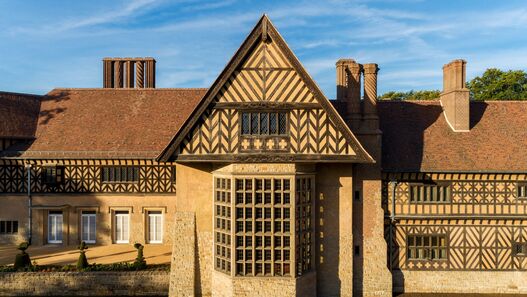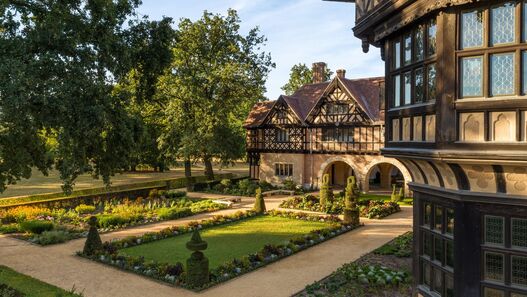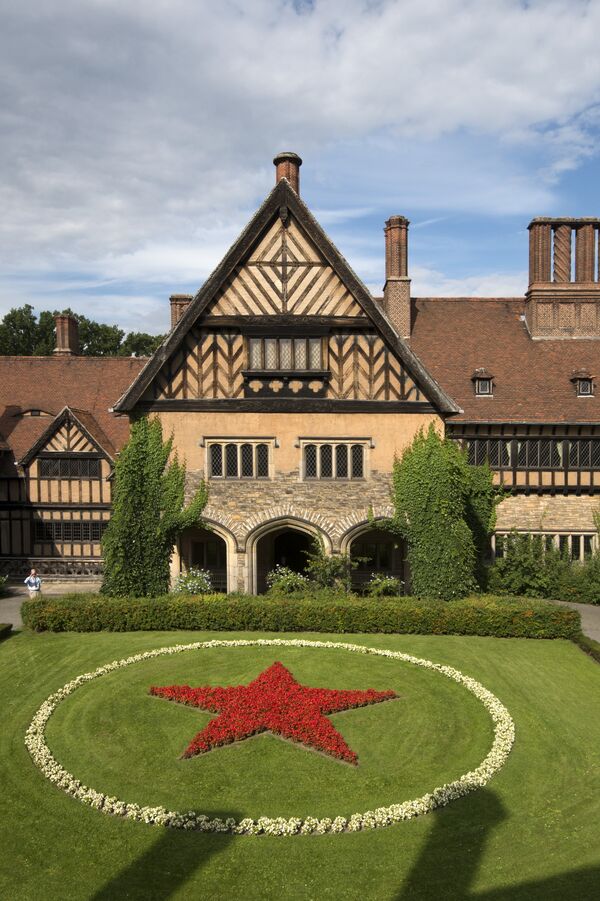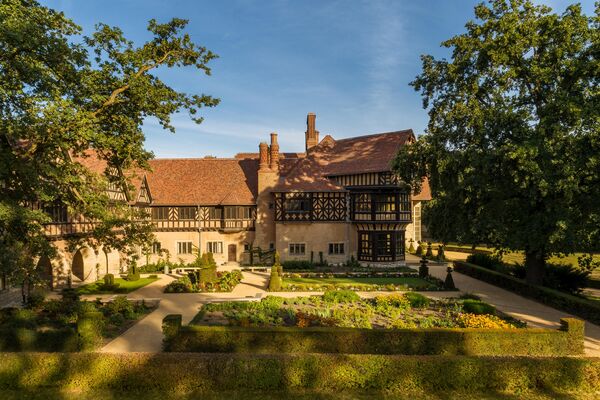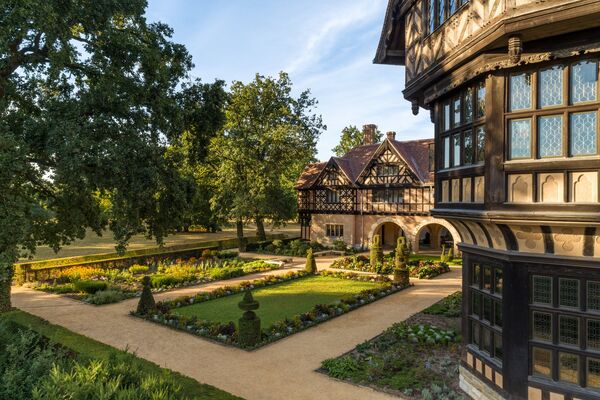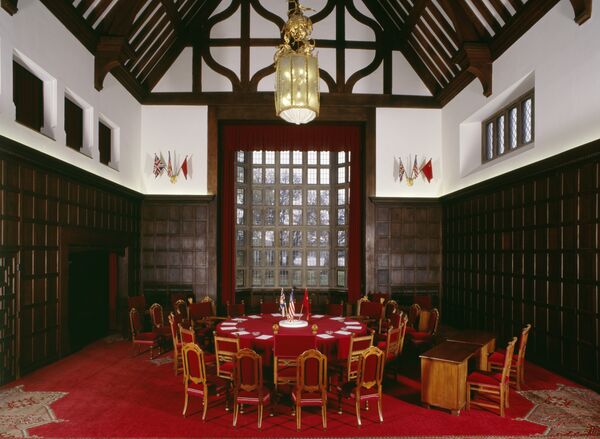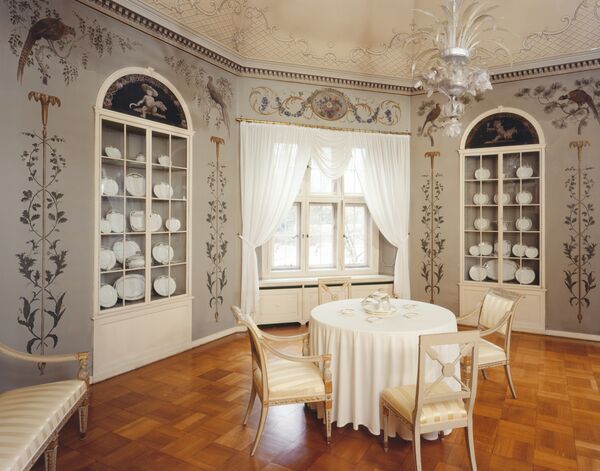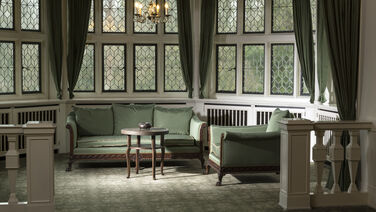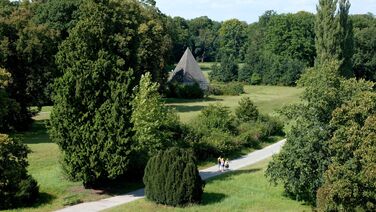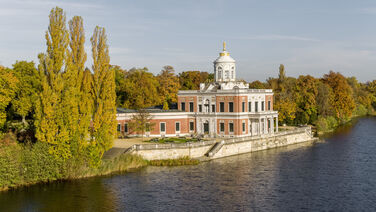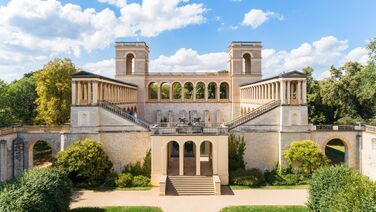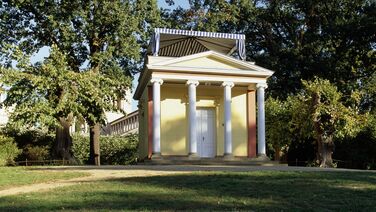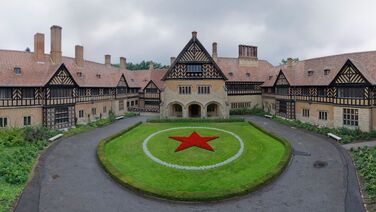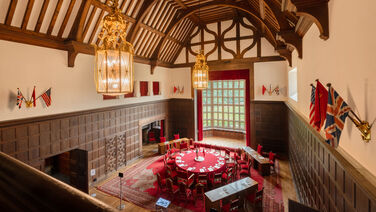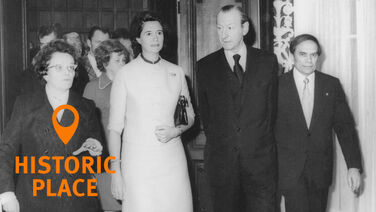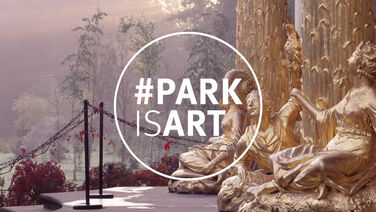Cecilienhof Country HouseThe Historic Site of the Potsdam Conference
Closed due to restoration work
Cecilienhof Country House is closed until further notice for restoration work performed as part of the "Prussian Palaces and Gardens Master Plan". Thank you for your understanding.
The country house and its history can be explored in virtual tours and digital exhibitions on Google Arts and Culture.
Cecilienhof Country House, built from 1913–17 according to plans by Paul Schultze in the style of a country manor, was the last palace erected by the Hohenzollerns. Emperor William II had the residence constructed for his oldest son, Crown Prince William. Until 1945 it was the home of the crown prince and princess, William and Cecilie of Prussia, who had previously resided in the Marble House.
The country house’s appearance was adapted to the natural surroundings through the use of traditional materials such as brick and wood. It fits beautifully into the northern part of the New Garden, which was created at the end of the 18th century in style of an English landscape garden.
To play down the true dimensions of the 176-room structure, the architect cleverly grouped its individual building components around several courtyards. The middle point of the country house is its large living room, which is entered through a vestibule and leads to the royal couple’s adjacent ceremonial rooms. Its massive, carved wooden staircase provides access to the upper story. The country house’s grand interiors include an area for the crown prince with a smoking lounge, library and breakfast room, as well as a personal realm for Cecilie with a music salon, writing room and parlor.
From July 17 to August 2, 1945, the summit meeting of World War II’s victorious powers took place here, attended by the “Big Three” – the American president Harry S. Truman, the British prime minister Winston Churchill (followed by his successor Clement Attlee), and the Soviet head of state Joseph Stalin.
The Potsdam Conference was one the most important historical events of the 20th century. It is seen around the world as a symbol of the end of World War II and the beginning of the Cold War, which led to the division of Europe and the erection of the Berlin Wall. The Potsdam Agreement adopted at Cecilienhof laid the groundwork for a new order in Germany, Europe, and the world after World War II. The border installations that stood not far from the building from 1961 to 1989 were an indirect result of the Potsdam Conference and thus also a part of the house’s history.
In the course of the Potsdam Conference, the house’s main rooms were refurnished and the red star installed in its court of honor.
To the info page of the venue
In 2011, Cecilienhof Country House was awarded the European Cultural Heritage Seal. The palace is a member of the Network of Places and Sites of the “Iron Curtain.”
Schloss Cecilienhof
Im Neuen Garten 11
14469 Potsdam
Public Transportation
Stop "Potsdam, Schloss Cecilienhof"
vbb-online | Timetable information
Traffic information
Parking
Paid parking spaces near the palace
Please note: Due to construction work, only car parking spaces are available
Visitor Centre Historic Windmill in Sanssouci Park
An der Orangerie 1
14469 Potsdam
Closed Mondays
Visitor Centre New Palace in Sanssouci Park
Am Neuen Palais 3
14469 Potsdam
Closed Tuedays
info@spsg.de
Phone: +49 (0)331.96 94-200 (Tue-Sun)
The exhibition rooms depicting the "Potsdam Conference" are wheelchair accessible. The Crown Prince's Apartment on the first floor is unfortunately not accessible for wheelchair users.
For conservation reasons, it is unfortunately not possible to use prams / baby strollers in the exhibition rooms.
Assistance dogs are welcome
In the surroundings you will find the following dining options
Meierei im Neuen Garten
Brewery & Inn directly on the shores of Jungfernsee
Café Midi
in the ‘Treffpunkt Freizeit’

